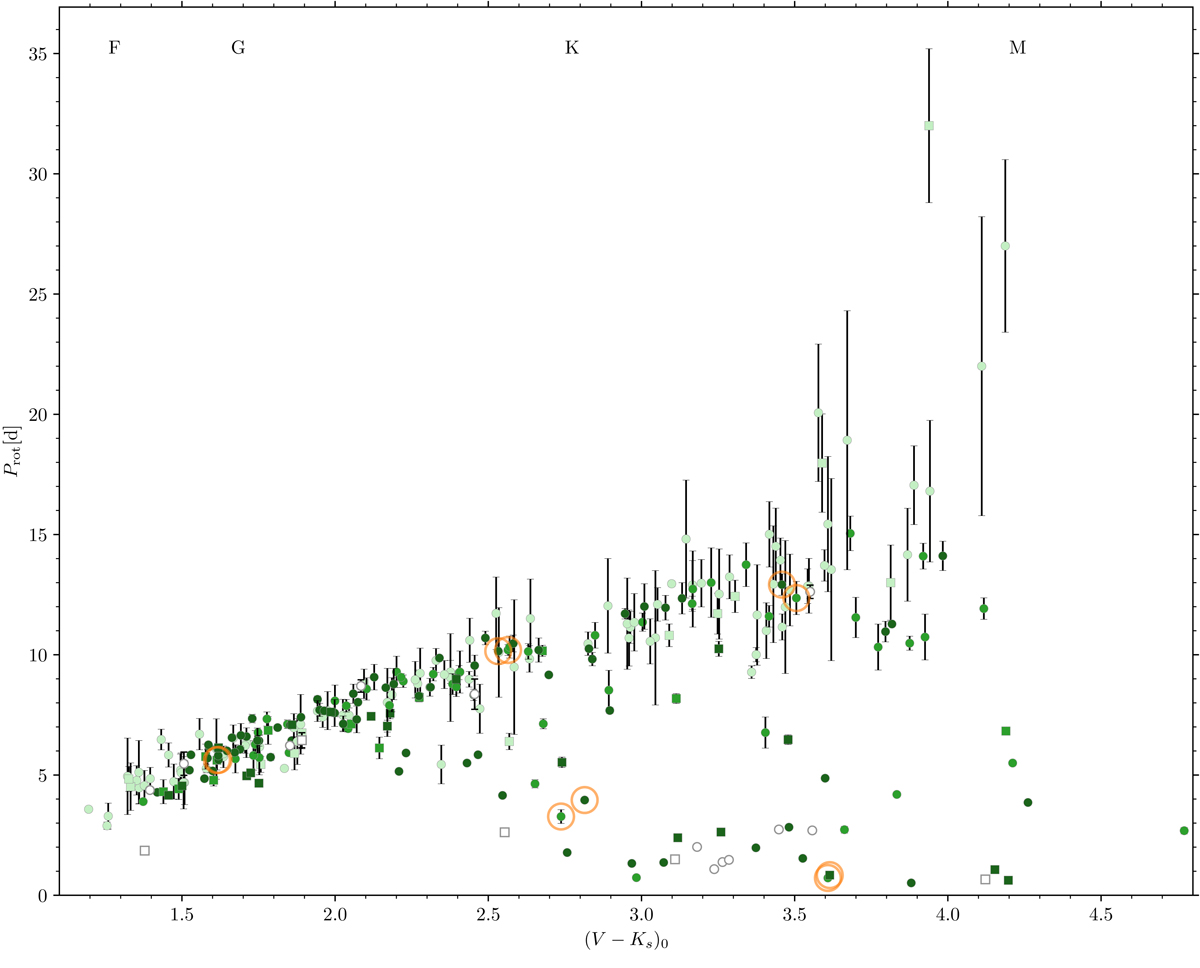Fig. 6.

Colour-period diagram for members of NGC 3532 with rotation periods. A well-populated slow rotator sequence is visible, as well an evolved fast rotator sequence. The continuation of the slow rotators into the M dwarf regime, the ‘extended slow rotator sequence’ is also apparent. The paucity of warmer fast rotators relative to younger open clusters is remarkable, and emphasises the mass dependence of the transition from fast to slow rotation. The best photometric rotation periods are marked in dark green and less evident (algorithmic) periods in lighter green. The lightest green symbols indicate the activity-informed photometric rotation periods from the companion paper (Fritzewski et al. 2021). The few periods with strong aliases are marked with unfilled symbols. Circles indicate likely single members and squares binaries. We show example light curves in Fig. A.1 for the stars encircled in orange. The bluest datum consists of two stars with nearly identical positions in the CPD, so that only one circle is visible. The period uncertainties are only visible when they exceed the symbol size.
Current usage metrics show cumulative count of Article Views (full-text article views including HTML views, PDF and ePub downloads, according to the available data) and Abstracts Views on Vision4Press platform.
Data correspond to usage on the plateform after 2015. The current usage metrics is available 48-96 hours after online publication and is updated daily on week days.
Initial download of the metrics may take a while.


